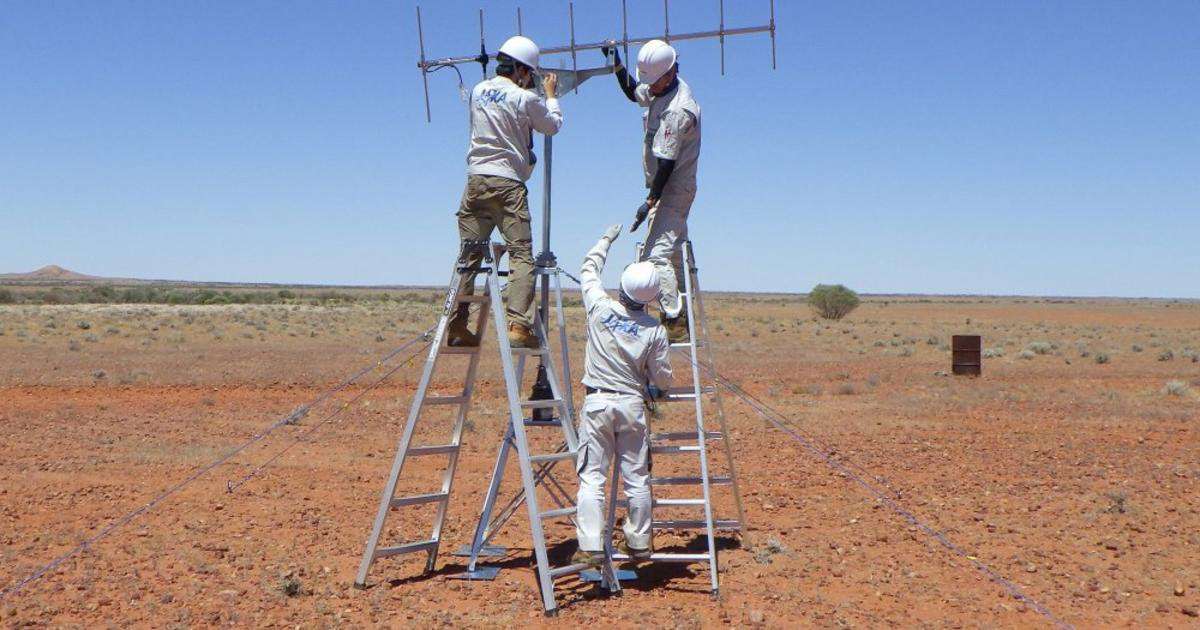A Japanese capsule returned to Earth on Saturday carrying a special delivery: the first rock samples from beneath the surface of an asteroid. When it plummeted to Earth, the capsule provided a stunning show above the Australian outback, streaking across the sky as a dazzling fireball.
Project manager Yuichi Tsuda called the mission a "rare event in human history." It marks just the second time pristine, untouched material directly from an asteroid has been brought back to Earth.
Japan's Hayabusa2 probe, which is roughly the size of a refrigerator, launched in December 2014, thrilling scientists when it landed on the diamond-shaped asteroid Ryugu, which means "dragon palace" in Japanese, located 185 million miles away.
Get Breaking News Delivered to Your Inbox
On Saturday, the probe successfully released a capsule for Earth, according to JAXA, Japan's national aerospace and space agency. The 15-inch capsule separated from the probe about 136,701 miles above Earth ahead of its planned descent into the Australian outback, near Woomera, South Australia.
JAXA's Hayabusa2 probe's sample drop to earth, as seen from Coober Pedy in South Australia on December 6, 2020. MORGAN SETTE/AFP via Getty Images
At 12:29 p.m. ET, the capsule streaked across the sky as a bright fireball. It was "slower than we expected," officials said during a live stream of the event. At 12:32 p.m. ET, the parachute successfully deployed and the direction searcher received a beacon radio wave signal from the capsule, indicating its location.
Shortly after, the capsule landed. The capsule landing point was estimated at 1:07 p.m. ET.
The rescue mission lasted nearly two hours, as officials raced around the outback in search of the tiny capsule. At 2:47 p.m. ET, the team found the capsule and its parachute in the planned landing area, thanks to the helicopter search.
"The operation was perfect," JAXA tweeted. JAXA streamed the entire event live on Twitter and YouTube. Watch it here.
WHY, HELLO SAMPLE CAPSULE! ☄️ The capsule weighs about 16 kg and is about 40 x 20 cm in size. The light is from the heat shield, which should have reached temperatures of around 3000°C during atmospheric re-entry, protecting the sample from such crazy temperatures. pic.twitter.com/7VqBeRk5KE — Elizabeth Tasker (@girlandkat) December 5, 2020
Scientists expect the capsule to contain a small amount of asteroid material, collected last year, with the goal of learning more about the origins of the solar system and life on Earth. Scientists believe that the rocks that compose the asteroid are around four billion years old.
The samples could shed light on "how matter is scattered around the solar system, why it exists on the asteroid and how it is related to Earth," Tsuda told reporters, according to a Friday news release.
The samples were collected during two separate landings on Ryugu last year. During the first, the probe collected dust and blasted a hole in the asteroid's surface to find additional material beneath it. Several months later, the probe returned to the crater it created to collect more samples.
"We may be able to get substances that will give us clues to the birth of a planet and the origin of life... I'm very interested to see the substances," mission manager Makoto Yoshikawa told reporters.
This Nov. 13, 2019, file image released by JAXA, shows asteroid Ryugu taken by Japan's Hayabusa2 spacecraft. JAXA via AP
Now that the capsule has arrived, the samples will soon be processed and flown to Japan, then divided between researchers at JAXA, NASA and other international organizations. Some samples will be set aside for future studies when technology has further advanced.
JAXA plans to extend Hayabusa2's mission for more than a decade, with its sights set on two new asteroids, 2001 CC21 and 1998 KY26.
Soichi Noguchi, a JAXA astronaut currently aboard the International Space Station, tweeted that he saw the spacecraft fly past the ISS. "Just spotted #hayabusa2 from #ISS! Unfortunately not bright enough for handheld camera, but enjoyed watching capsule!"
The NASA OSIRIS-REx mission recently collected a sample from another near-Earth asteroid — Bennu, which is similar to Ryugu. The sample will return to Earth in 2023.

skeebidybop on December 6th, 2020 at 04:01 UTC »
Here’s a fascinating PBS Nova documentary about these space missions to retrieve samples from asteroids!
https://www.pbs.org/wgbh/nova/video/touching-the-asteroid/
This is a historic achievement, and unfathomably difficult to pull off as well! This research is also profoundly informative about the origins of the solar system, moreso than you’d expect.
edit - here's the same documentary on Youtube (720p), in case you're geoblocked on the PBS website. Setting your VPN to the US should also work, if you have one!
amped-row on December 6th, 2020 at 02:35 UTC »
I don’t know anything about rocket science but that sounds extremely hard to do
donaldtrumptwat on December 6th, 2020 at 01:17 UTC »
Congratulations Japan. Job well done .